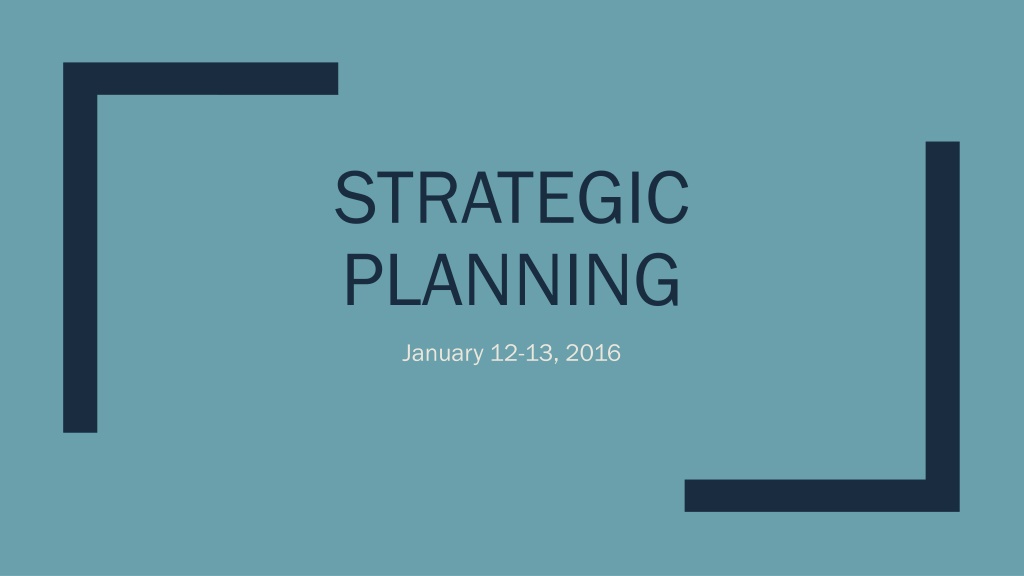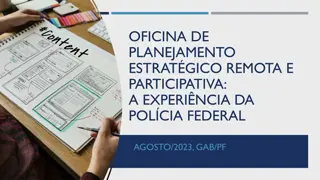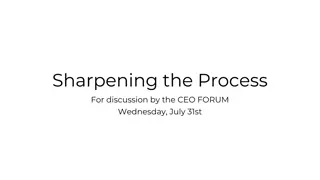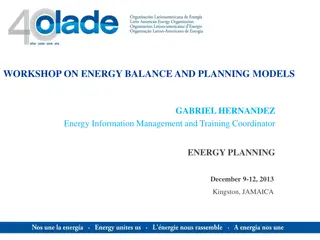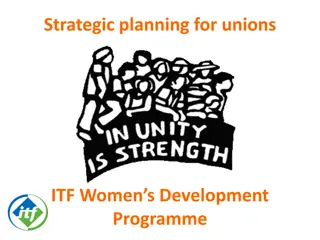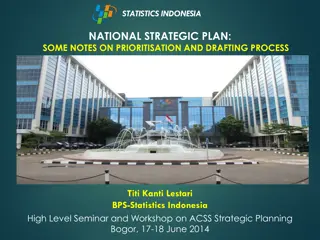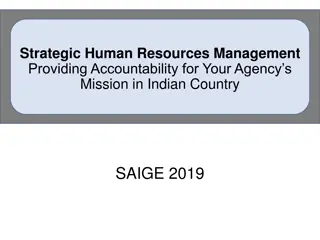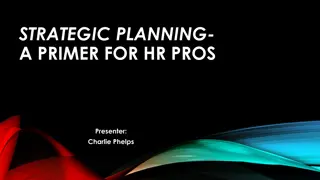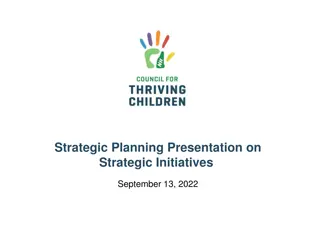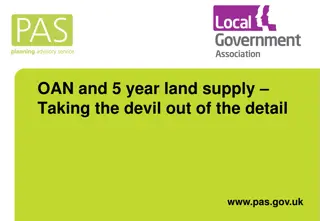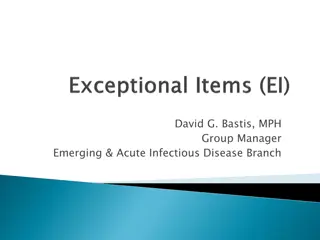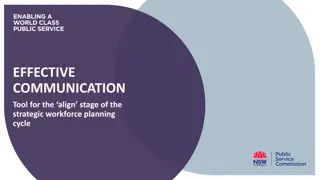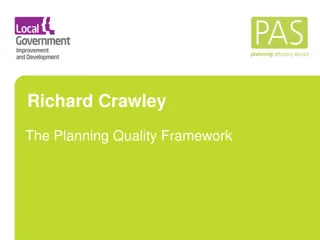Strategic Planning Process Overview
The strategic planning process involves completing needs assessment, prioritization, identifying intermediate variables, and assessing coalition capacity and community readiness. Progress includes finalizing logic models, identifying policy gaps, utilizing media advocacy, and setting SMART objectives for sustained outcomes.
Download Presentation

Please find below an Image/Link to download the presentation.
The content on the website is provided AS IS for your information and personal use only. It may not be sold, licensed, or shared on other websites without obtaining consent from the author. Download presentation by click this link. If you encounter any issues during the download, it is possible that the publisher has removed the file from their server.
E N D
Presentation Transcript
STRATEGIC PLANNING January 12-13, 2016
Where are we in the planning process? Needs assessment data collection and prioritization - Consequence - Consumption - Intermediate variables - Target population(s) - Coalition capacity - Community readiness COMPLETED!! COMPLETED!!
Where we are going next Planning completing the logic model and work plan - Identifying gaps in policies and enforcement - Identifying groups who need to support changes (media advocacy) - Assessing strategy fit - Ensuring cultural competency - Creating problem statements, goals, SMART objectives - Creating an actionable action plan - Tracking and assessing impact of funded efforts: process and outcome measures - Sustaining outcomes
Oklahomas Logic Model Substance- Related Consequences Substance Use Intermediate Variables Strategies
Practice Logic Model Laws/policies Enforcement Media Advocacy Easy retail access to alcohol for youth Alcohol-related car crashes Underage drinking -------- Coalition Capacity Community Readiness -------- Support strategies
Resource Assessment Laws/Policies Enforcement Media Advocacy
Group work (1) - Applying Concepts Practice Underage Alcohol Use Step 1: Step 1: Completing an environmental gaps analysis (NIAAA) http://alcoholpolicy.niaaa.nih.gov/ - Laws - Policies - Enforcement Step 2 Step 2: Identifying groups who need to support new laws/policies/increased enforcement - Media Advocacy
Group work (2) - Strategic Fit Checklist for Environmental Strategies
Group work (3) - Applying Concepts Practice Underage Alcohol Use Step 1: Step 1: Use the Strategic Fit Checklist for Environmental Strategies to assess fit for strategies selected in Group Work 1 session (Laws/policies/enforcement) Don t forget to consider cultural competency Don t forget to consider cultural competency Step 2: Step 2: Use the consequence, consumption, intervening variable, and NEWLY strategies to complete the logic model on the blank work plan template NEWLY selected
Practice Logic Model Laws/policies Enforcement Media Advocacy Easy retail access to alcohol for youth Alcohol-related car crashes Underage drinking -------- Coalition Capacity Community Readiness -------- Support strategies
From Logic Model to Strategic Planning Work plan example: - Assessment Summary - Problem Statements - Direct and Indirect Populations - Goals - SMART Objectives - Outcome Statements - Outcome Indicators - Sustainability
Group work (4) - Applying Concepts Practice Underage Alcohol Use Strategic Planning Step 1: Step 1: Use a select set of underage alcohol use indicator data to create an assessment summary Step 2: Step 2: Use consequence indicator data to create a problem statement Step 3: Step 3: Identify direct and indirect populations Step 4a: Step 4a: Create a goal statement based on consumption issue Step 4b: Step 4b: Use consumption indicator data to create dated dated long-term impact/outcome statements Step 5a: Step 5a: Create an objective statement based on intermediate variable issue Step 5b: Step 5b: Use intermediate variable indicator data to create dated dated intermediate outcome statements Step 5c: Step 5c: Discuss strategies for sustaining outcomes
Action Planning Work plan example: - Key Tasks - Timeline - Responsible Person - Ensuring Cultural Competency
Group work (5) - Applying Concepts Practice Underage Alcohol Use Action Planning Step 1: Step 1: Use the strategies identified in previous Group Work sessions and list key tasks, timeline and responsible person don t forget to discuss cultural competency Step 2: Step 2: Include cultural competency discussion on work plan
Measuring Your Effort Work plan example: - Process Measures (number, percent) - Output (deliverable can hand document to funder) - Immediate Outcomes (change targeted by this strategy)
Group work (6) - Applying Concepts Practice Underage Alcohol Use Measuring Effort Step 1: Step 1: Use key task to create a process measure statements (number, percent) Step 2: Step 2: Use key task to create a output statements (deliverable) Step 3: Step 3: Use the reason you chose the strategy (what change is targeted by this strategy) to create dated dated immediate outcome statements Step 4: Step 4: Include sustainability of the outcome discussion on work plan
Questions? Evaluation: https://www.surveymonkey.com/r/WZ7GBH6
